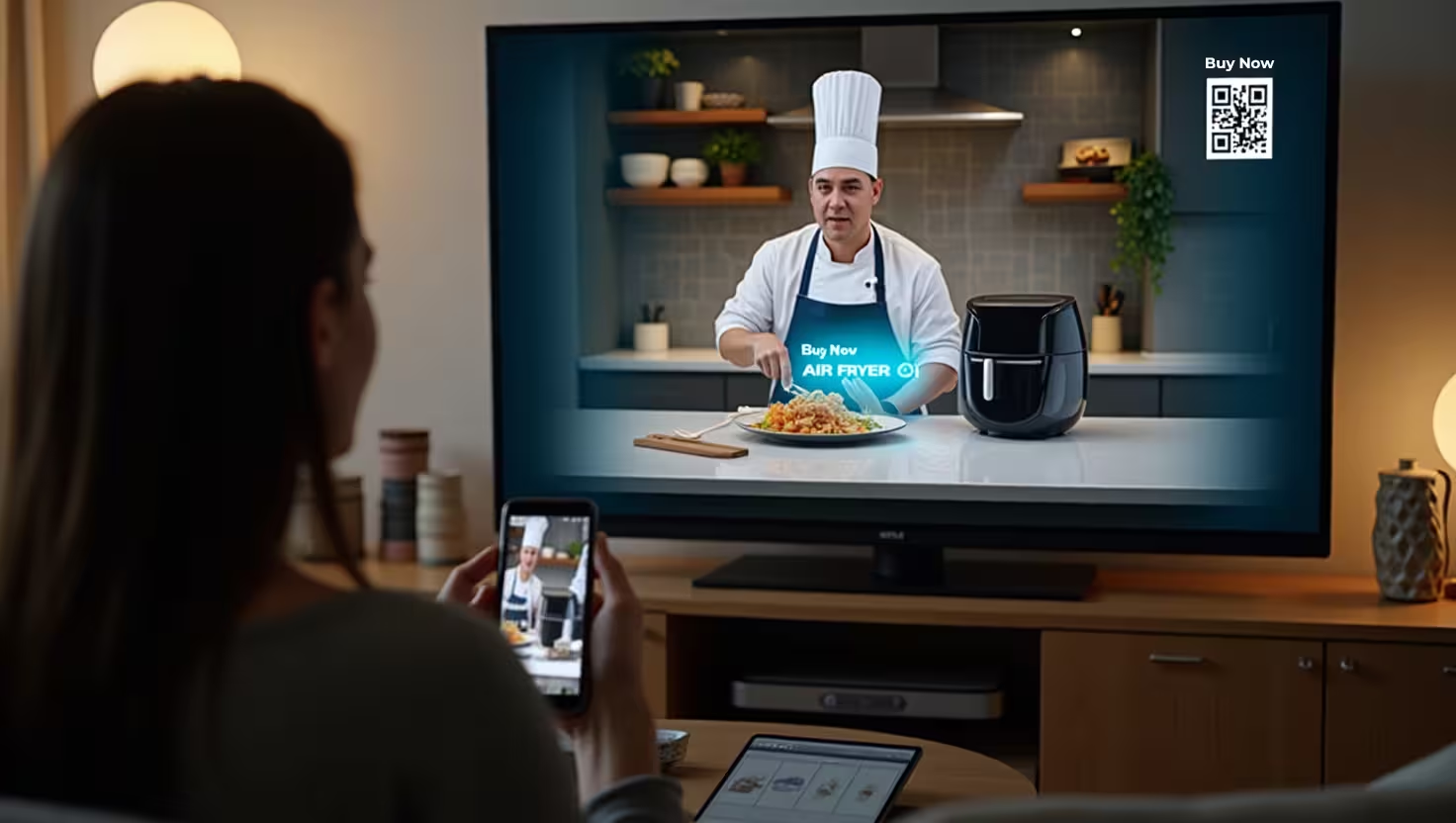
From Watch to Buy: How Interactive Shopping and Cross-Device Ads Are Redefining OTT
As 2025 comes to a close, the OTT industry is rapidly evolving and expanding beyond traditional streaming. Today’s platforms are no longer just about video content delivery, they’re transforming into interactive, commerce-enabled ecosystems.
One of the most promising developments? Interactive shopping experiences and cross-device advertising innovations. This convergence of content, commerce, and real-time interactivity is opening new doors for monetization, engagement, and viewer satisfaction.
The Rise of Interactive Commerce in OTT

The success of TikTok Live has been a clear signal: audiences want more than passive viewing. They want to engage, interact, and shop. All in real time.
In markets like China and Southeast Asia, live commerce has become a standard feature, with influencers, creators, and brands showcasing products in video streams while users buy directly from the screen. According to the OTT Technology: The Ultimate Guide for 2025, this trend is now expanding into OTT platforms, where live shopping can be layered directly into the user experience.
For example, imagine watching a cooking show on your favorite OTT app. As the chef demonstrates a smart air fryer, the interface displays a “Buy Now” button or scannable QR code. In one click (or one tap) you’ve placed the product in your cart without pausing the show.
Cross-Device Advertising: From Big Screen to Small Screen

While interactive shopping is gaining momentum, cross-device advertising is changing how OTT platforms and advertisers connect with viewers.
This technology allows content providers to deliver ads on one device, such as a smart TV, and prompt action on a second screen, like a smartphone or tablet. During ad playback on the big screen, viewers might receive a push notification or clickable link on their mobile device, enabling them to learn more or purchase instantly.
This is known as cross-device conversion. A report by Magnite found that over 60% of consumers have engaged with a second screen while watching content on a TV. That behavior is now being harnessed by OTT operators to drive measurable outcomes for advertisers.
A Practical Use Case for OTT Providers

Let’s say you’re an OTT provider with a popular lifestyle content vertical. You partner with a smart home appliance brand and integrate dynamic ad slots into your content. During a series episode, a new air purifier is featured. Viewers on connected TVs see the product with a scannable QR code, while mobile app users get a timed push notification with a limited-time offer.
Behind the scenes, your platform tracks impressions, click-through rates, and conversion data, thus creating a new monetization layer through affiliate partnerships or direct ecommerce integration.
This is not theoretical. With the right middleware and cross-platform architecture, this level of interactivity is already achievable today.
The Strategic Advantage

For OTT providers, the implications are clear:
- Increased revenue through affiliate sales, advertising, and direct ecommerce.
- Stronger user engagement through personalized, real-time interactions.
- Competitive differentiation in a crowded market.
At UniqCast, we’re helping operators future-proof their platforms by enabling features like multiscreen ad targeting, push notification integration, and seamless commerce extensions. The OTT experience is no longer just about delivering content. It’s about delivering value and action.
What’s Next?
Looking ahead, we expect to see:
- AI-driven personalization of shopping recommendations based on viewing behavior
- More “shoppable moments” embedded directly into on-demand content
- Advanced analytics connecting viewing data with transaction outcomes
As OTT platforms evolve into full-fledged media and commerce hubs, those who innovate early will have the upper hand.




